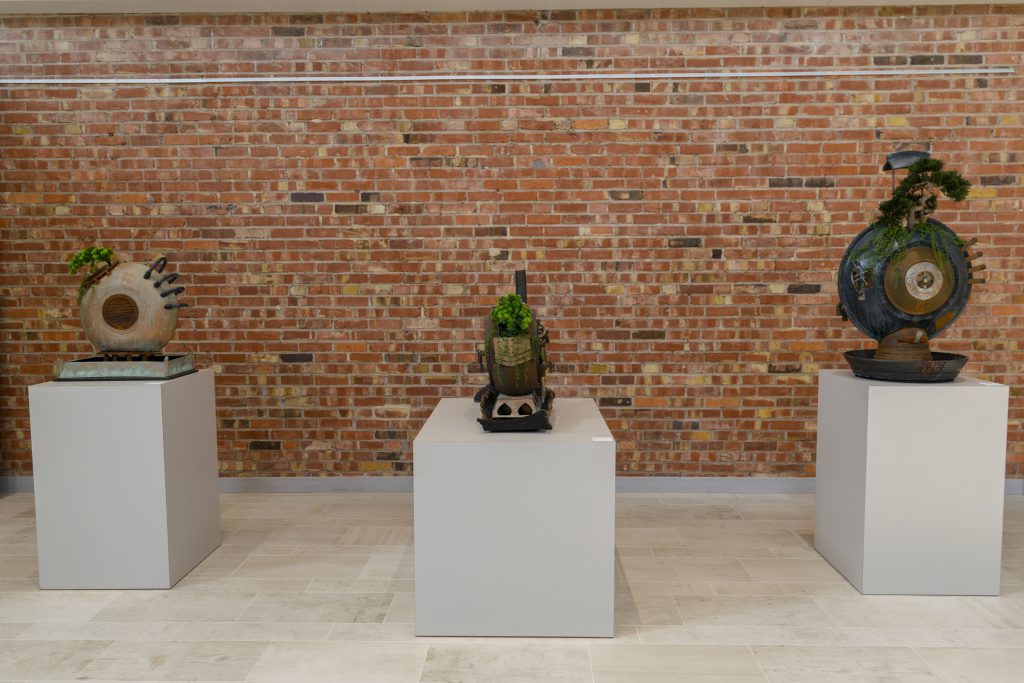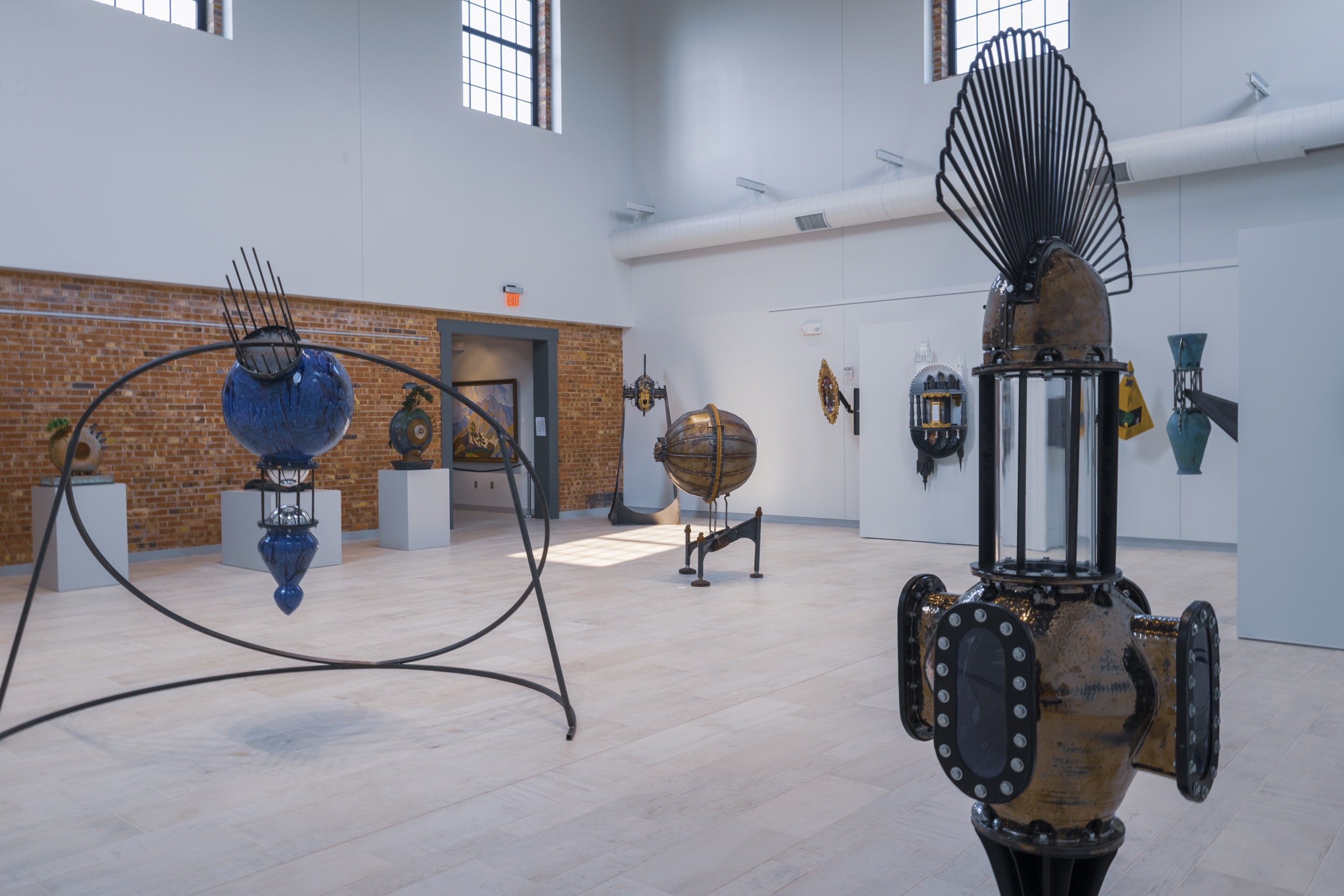BY RAEGAN NEUFELD
PHOTOS BY ALEX JUAREZ
VIDEO BY LAUREN HUYNH
The description, “Josh Heimsoth, MFA Thesis Exhibition, Ceramics,” simply does not do the current Moss-Thorns Gallery of Art display justice. Unveiled on August 27, Heimsoth’s gallery of works is a sprawling collection of detailed pieces that go far beyond just ceramics.
Originally from Sedalia, Mo., Heimsoth has been a part of the MFA program at FHSU since 2017.
“It is a strong program taught by internationally shown professors and it was a good fit for me since I was already over a decade into my career and was not going to quit my job to attend a school with a traditional style degree,” Heimsoth said.
Before attending FHSU, his career in ceramics began in the early 2000s, although he says it was not serious until 2012. He also likes to draw, collage, and paint.
The most common materials used in a majority of his pieces are ceramic and steel. Other materials include wood, rubber, copper, ‘found objects,’ metal, and plastic. There are also several digital hybrid collages.
“The digital collages are hybrids of gifs, cut pictures and clever painting to marry all the disparate elements together,” Heimsoth said. “I try to craft them so that once they are switched on they become one seamless image.”




Heimsoth has incorporated movement into some of his pieces as well. For example, one piece has a spinning wheel and another trickles water from the top down into a basin at the bottom. The gallery also allows for interaction. Signs in the gallery show Heimsoth’s message to his viewers as they walk in.
“Some of my pieces are meant to be viewed while others were designed for interaction and all encourage exploration,” he said, “I ask that you be respectful but please do not be afraid to twist a dial or poke a button.”
Viewers may notice that some of the pieces depict a sort of commentary on different elements such as nature, society, and religion. According to Heimsoth, the inspiration for these pieces include outdated industrial complexes and perspective in the scope of the greater course of history.
Heimsoth said the title of the exhibition – “Sacred Industry” – comes from the concept that large corporations and organized religious institutions both function in very similar ways to both positive and negative outcomes.

One piece, in particular, is bluntly titled, “Do Antisemites go to Heaven?” The piece gives some information on the German priest Martin Luther, and how some of his writings were antisemitic and were actually used in some of Adolf Hitler’s speeches. The top of the piece is painted white and has three, church-like, stained-glass windows, each that show saintly or angelic figures. The white turns into black at the bottom of the piece, and the saints and angels are replaced by pictures of the devil and a swastika in the bottom windows.
Heimsoth stated that the inspiration for this piece came from the frustration of hidden history.
“I don’t appreciate being treated as though I am too imbecilic to discover the truth and I try to give my audience the respect missing from most modern media,” he said.
In total, Heimsoth’s gallery consists of 31 pieces, and the piece called, “St. Marky Z,” took the longest to finish. Altogether, the collection is a culmination of two years’ work.
For Heimsoth, the process of creating art is about the enjoyment of creating. He spends his free time in the studio.
“It makes me happy and allows me the delusion that I am creating interesting things that will last well after I am gone,” he said.
Heimsoth’s exhibit will continue to be on display at the Art and Design Building, in the Moss-Thorns Gallery of Art through September 10th




“Do Antisemites go to Heaven?”

